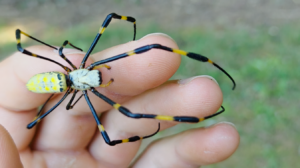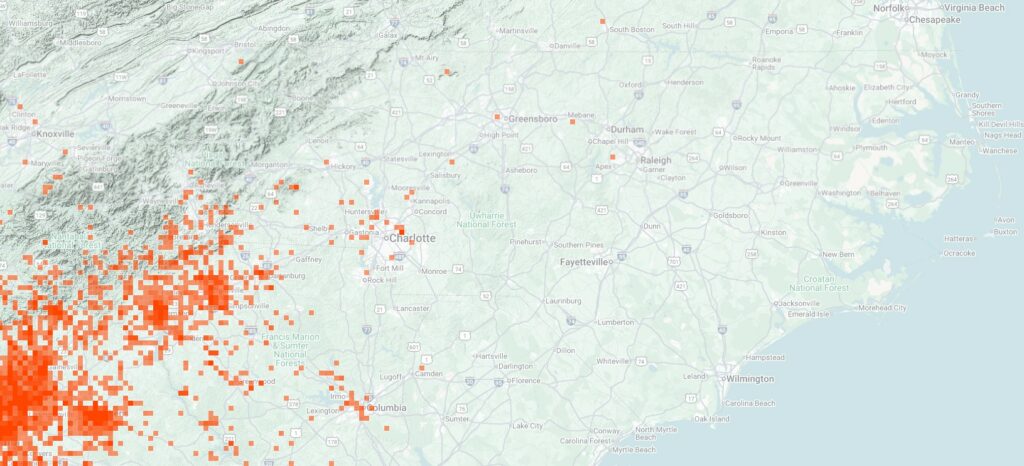Joro Spiders in North Carolina: Everything You Need to Know
go.ncsu.edu/readext?1094290
en Español / em Português
El inglés es el idioma de control de esta página. En la medida en que haya algún conflicto entre la traducción al inglés y la traducción, el inglés prevalece.
Al hacer clic en el enlace de traducción se activa un servicio de traducción gratuito para convertir la página al español. Al igual que con cualquier traducción por Internet, la conversión no es sensible al contexto y puede que no traduzca el texto en su significado original. NC State Extension no garantiza la exactitud del texto traducido. Por favor, tenga en cuenta que algunas aplicaciones y/o servicios pueden no funcionar como se espera cuando se traducen.
Português
Inglês é o idioma de controle desta página. Na medida que haja algum conflito entre o texto original em Inglês e a tradução, o Inglês prevalece.
Ao clicar no link de tradução, um serviço gratuito de tradução será ativado para converter a página para o Português. Como em qualquer tradução pela internet, a conversão não é sensivel ao contexto e pode não ocorrer a tradução para o significado orginal. O serviço de Extensão da Carolina do Norte (NC State Extension) não garante a exatidão do texto traduzido. Por favor, observe que algumas funções ou serviços podem não funcionar como esperado após a tradução.
English
English is the controlling language of this page. To the extent there is any conflict between the English text and the translation, English controls.
Clicking on the translation link activates a free translation service to convert the page to Spanish. As with any Internet translation, the conversion is not context-sensitive and may not translate the text to its original meaning. NC State Extension does not guarantee the accuracy of the translated text. Please note that some applications and/or services may not function as expected when translated.
Collapse ▲Here in North Carolina, our native orb weaving spiders are a familiar sight during the early Fall, with species such as spotted orb weavers and writing spiders consistently marking the changing seasons. But recently, an unfamiliar species has appeared amongst our Autumn spider assemblage – an international traveler that just might be here to stay.

Adult Joro spider dorsal view. Photo by Ben Zino.
Meet the Joro spider – a brilliantly colored, palm-sized arachnid that looks like a gaudy Halloween decoration. Hailing from a native range which includes Japan and much of Western Asia, these arachnids are thought to have been mistakenly transported to the U.S on international cargo shipments. First detected near Atlanta, Georgia in 2014, Joro spiders quickly took to their new home, and were first detected in Western North Carolina in the Fall of 2021.

Map showing reports of Joro spider on iNaturalist as of September 2025.

Immature Joro spider life stages. Photos by Jena Johnson, UGA.
Their remarkable ability to disperse so effectively is made possible by a behavior called ‘ballooning’, in which young spiderlings emit a parachute-like strand of silk that they can use to ride wind currents hundreds of miles. While adults can’t fly, they can be accidentally transported by vehicles, which is especially problematic when mature females are capable of producing over 400 young per clutch.
Thankfully, despite their large size, these spiders pose no threat to humans. Their venom, a mild neurotoxin, is designed to paralyze small flying insects, and causes similar symptoms to those of a bee sting in most cases.

Adult Joro spider ventral view. Photo by Ben Zino.
So now that they’re here, what exactly are Joro spiders up to? We need your help figuring that out! This invasion is recent enough that we aren’t yet sure what impact this species might be having on local ecosystems, or how quickly they are moving throughout NC.
If you think you’ve found one of these arachnids in your local area, snap a photo and upload your observation using the free iNaturalist app!
Written by Ben Zino, Creative Director, The Wild Report YouTube


